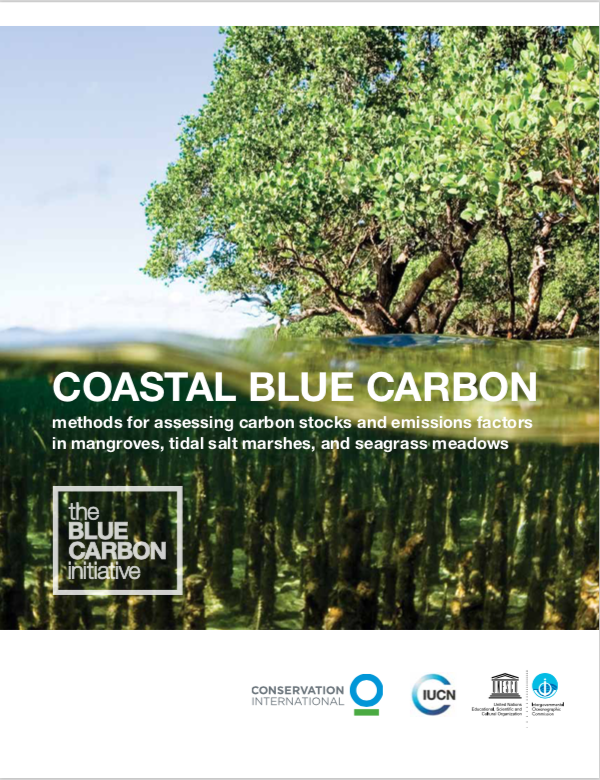MANUAL FOR MEASURING, ASSESSING, AND ANALYZING COASTAL BLUE CARBON
Coastal ecosystems are critical to maintaining human well-being and global biodiversity. Mangroves, tidal salt marshes, and seagrasses sequester and store significant amounts of coastal blue carbon from the atmosphere and ocean and are now recognized for their role in mitigating climate change. Conservation and restoration of these coastal ecosystems has been increasingly addressed in international and national climate change mitigation policy and finance mechanisms.
The International Blue Carbon Initiative’s team of 34 experts in the fields of coastal carbon measurement, remote sensing, and climate policy produced this manual with the goal standardizing protocols for sampling methods, laboratory measurements, and analysis of blue carbon stocks and fluxes. The manual will provide scientists and coastal managers with a practical tool to produce robust blue carbon data.
We hope that the data produced inspires and enables natural resource professionals and other decision makers to take action to conserve coastal ecosystems, and their diverse ecosystem functions.
You can download the manual “Coastal Blue Carbon: methods for assessing carbon stocks and emissions factors in mangroves, tidal salt marshes, and seagrass meadows”, by completing the following form:
Download the Blue Carbon Field Manual
Complete the following form to access a link to download the manual. If you have any comments, questions, or corrections, please email us at: jhoward@conservation.org.
Please note that the Coastal Blue Carbon Manual has been updated as of March 2019.
The link to download the manual will appear as soon as you hit submit. Additional links to download by chapter for slower connections will also be available.
Contents
Chapter 1 – Why Measure Carbon Stocks
Chapter 2 – Conceptualizing the Project and Developing a Field Measurement Plan
Chapter 3 – Field Sampling of Soil Carbon Pools in Coastal Ecosystems
Chapter 4 – Field Sampling of Vegetative Carbon Pools in Coastal Ecosystems
Chapter 5 – How to Estimate Carbon Dioxide Emissions
Chapter 6 – Remote Sensing and Mapping
Chapter 7 – Data Management Appendices References
Suggested Citation
Howard, J., Hoyt, S., Isensee, K., Pidgeon, E., Telszewski, M. (eds.) (2014). Coastal Blue Carbon: Methods for assessing carbon stocks and emissions factors in mangroves, tidal salt marshes, and seagrass meadows. Conservation International, Intergovernmental Oceanographic Commission of UNESCO, International Union for Conservation of Nature. Arlington, Virginia, USA.


